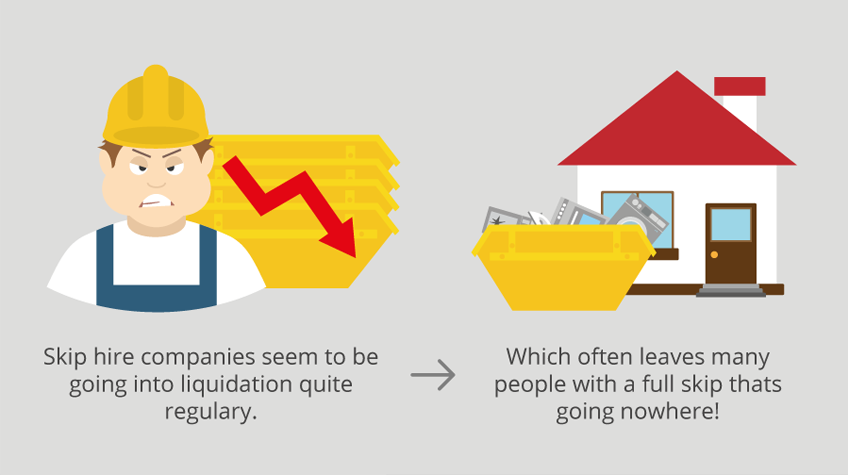In-Depth Overview to Company Administration: Ramifications When a Company Goes into Liquidation
In-Depth Overview to Company Administration: Ramifications When a Company Goes into Liquidation
Blog Article
The Process and Repercussions of a Business Getting Into Management
As a company faces economic distress, the choice to go into management marks an important point that can have far-ranging ramifications for all involved celebrations. The procedure of getting in administration is complex, including a series of steps that intend to navigate the business towards potential recuperation or, sometimes, liquidation. Recognizing the functions and obligations of an administrator, the influence on different stakeholders, and the legal commitments that enter into play is essential in understanding the gravity of this situation. The consequences of such a step ripple past the firm itself, forming its future trajectory and affecting the more comprehensive service landscape.

Introduction of Company Administration Refine
In the realm of company restructuring, an important first action is obtaining a thorough understanding of the intricate company management process. Company management refers to the formal bankruptcy treatment that intends to save a monetarily troubled business or achieve a much better outcome for the company's creditors than would be possible in a liquidation situation. This process involves the appointment of an administrator, that takes control of the firm from its supervisors to analyze the economic circumstance and identify the ideal training course of action.
During administration, the company is approved security from legal action by its creditors, giving a halt period to develop a restructuring plan. The manager functions with the business's monitoring, financial institutions, and various other stakeholders to create a technique that might entail offering the company as a going concern, reaching a company volunteer arrangement (CVA) with lenders, or inevitably positioning the firm right into liquidation if rescue attempts show futile. The key goal of company administration is to maximize the return to financial institutions while either returning the firm to solvency or shutting it down in an organized way.
Roles and Duties of Manager
Playing a crucial role in supervising the company's monetary affairs and decision-making procedures, the manager thinks considerable obligations during the company restructuring process. The key duty of the administrator is to act in the ideal interests of the business's lenders, intending to attain the most beneficial result feasible. company administration uk. This entails performing a thorough analysis of the firm's financial scenario, creating a restructuring strategy, and implementing strategies to make best use of returns to creditors
Furthermore, the administrator is accountable for liaising with numerous stakeholders, consisting of workers, providers, and governing bodies, to ensure openness and compliance throughout the management procedure. They have to additionally connect efficiently with shareholders, providing normal updates on the firm's progress and seeking their input when necessary.
In addition, the manager plays an essential role in managing the day-to-day operations of the service, making crucial decisions to maintain connection and maintain worth. This includes examining the stability of different restructuring alternatives, discussing with financial institutions, and inevitably directing the business in the direction of an effective departure from administration.
Effect On Firm Stakeholders
Presuming an essential placement in looking after the firm's financial events and decision-making processes, the administrator's actions during the business restructuring procedure have a straight impact on various company stakeholders. Shareholders may experience a decline in the worth of their investments as the company's economic troubles are attended to. Lenders, consisting of loan providers check it out and suppliers, may deal with uncertainties regarding the settlement of financial debts owed to them. Staff members frequently run into work instabilities due to possible discharges or adjustments in job problems as component of the restructuring efforts. Customers might experience disturbances in services or product schedule during the administration process, affecting their trust and commitment in the direction of the company. In addition, the area where the business operates might be influenced by prospective job losses or changes in the firm's procedures, influencing neighborhood economic climates. Reliable interaction from the administrator to stakeholders is crucial in managing assumptions, minimizing worries, and promoting transparency throughout the administration process.
Legal Implications and Obligations
Throughout the procedure of business management, mindful consideration of the lawful implications and responsibilities is paramount to guarantee conformity and shield the passions of all stakeholders involved. When a business enters administration, it causes a set of legal demands that need to be stuck to. One of the main responsibilities is for the selected administrator to act in the most effective passions of the firm's creditors. This task requires the administrator to carry out detailed examinations right into the business's events, evaluate its monetary position, and develop a method to make the most of returns to lenders.
In addition, legal effects emerge worrying the treatment of workers. The manager must follow work regulations concerning redundancies, worker rights, and commitments to offer necessary information to employee representatives. what happens to employees when a company goes into liquidation. Failing to follow these lawful demands can result in legal action versus the company or its managers
Additionally, the business going into administration may have contractual obligations with numerous celebrations, consisting of property managers, customers, and distributors. These contracts require to be assessed to identify the very best program of action, whether to terminate, renegotiate, or meet them. Failing to take care of these contractual responsibilities suitably can bring about disagreements and prospective legal repercussions. Basically, understanding and fulfilling legal commitments are important elements of navigating a firm via the management procedure.
Methods for Business Healing or Liquidation
In considering the future instructions of a business in administration, tactical preparation for either recuperation or liquidation is important to chart a viable path onward. When check these guys out aiming for company recuperation, crucial approaches may consist of performing an extensive analysis of business procedures to determine inadequacies, renegotiating leases or contracts to improve money circulation, and applying cost-cutting procedures to enhance earnings. Additionally, seeking new financial investment or financing options, branching out profits streams, and concentrating on core proficiencies can all add to an effective recuperation strategy.
Conversely, in circumstances where business liquidation is deemed one of the most appropriate course of activity, strategies would include maximizing the worth of properties with effective possession sales, resolving arrearages in a structured way, and abiding with lawful requirements to make sure a smooth winding-up procedure. Communication with stakeholders, including employees, financial institutions, and clients, is essential in either scenario to maintain openness and take care of assumptions throughout the recovery or liquidation process. Inevitably, selecting the appropriate approach depends on a comprehensive evaluation of the firm's monetary health and wellness, market setting, and long-lasting prospects.
Verdict
In conclusion, the procedure of a company going into management involves the visit of an administrator, who tackles the obligations of managing the company's events. This procedure can have substantial consequences for numerous stakeholders, including staff members, lenders, and shareholders. It is necessary for firms to carefully consider their alternatives and methods for either recuperating from great post to read financial troubles or continuing with liquidation in order to reduce potential lawful implications and commitments.
Company management refers to the official insolvency treatment that intends to save a monetarily distressed firm or achieve a far better outcome for the company's financial institutions than would be feasible in a liquidation scenario. The administrator functions with the business's administration, financial institutions, and various other stakeholders to devise an approach that may entail offering the business as a going worry, reaching a firm voluntary setup (CVA) with creditors, or inevitably putting the business right into liquidation if rescue attempts show useless. The primary objective of business management is to maximize the return to creditors while either returning the business to solvency or shutting it down in an organized fashion.

Report this page